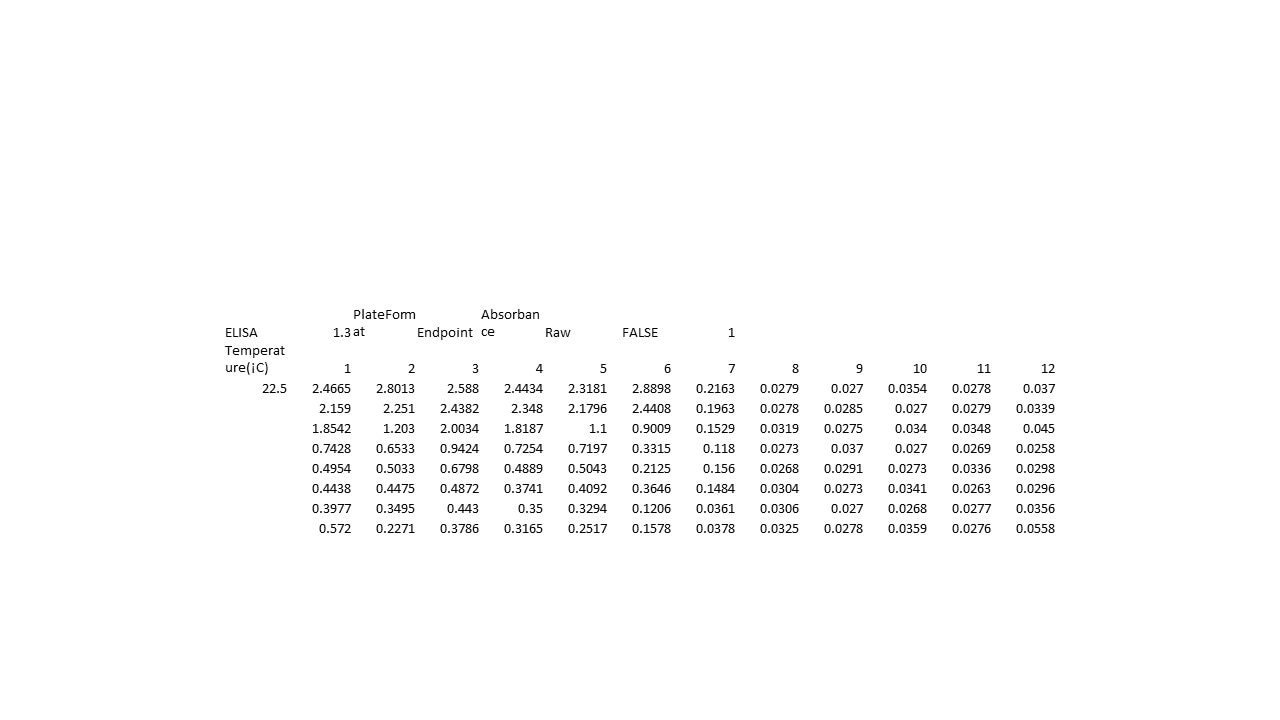Human LILRB2/CD85d/ILT4 Antibody Summary
35% cross-reactivity with recombinant human (rh) ILT2 is observed and 5% cross-reactivity with rhILT5 is observed.
Gly24-His458
Accession # Q8N423
Applications
Please Note: Optimal dilutions should be determined by each laboratory for each application. General Protocols are available in the Technical Information section on our website.
Scientific Data
 View Larger
View Larger
Cell Adhesion Mediated by LILRB2/CD85d/ILT4 and Neutralization by Human LILRB2/CD85d/ILT4 Antibody. Recombinant Human LILRB2/CD85d/ILT4 Fc Chimera (2078-T4), immobilized onto a microplate, supports the adhesion of the HSB2 human peripheral blood acute lymphoblastic leukemia cell line in a dose-dependent manner (orange line). Adhesion elicited by Recombinant Human LILRB2/CD85d/ILT4 Fc Chimera (35 µg/mL) is neutralized (green line) by increasing concentrations of Goat Anti-Human LILRB2/CD85d/ILT4 Antigen Affinity-purified Polyclonal Antibody (Catalog # AF2078). The ND50 is typically 0.3-1.0 µg/mL.
 View Larger
View Larger
Detection of LILRB2/CD85d/ILT4 in Human Malignant Lymph Node. LILRB2/CD85d/ILT4 was detected in immersion fixed paraffin-embedded sections of Human Malignant Lymph Node using Goat Anti-Human LILRB2/CD85d/ILT4 Antigen Affinity-purified Polyclonal Antibody (Catalog # AF2078) at 3 µg/mL for 1 hour at room temperature followed by incubation with the Anti-Goat IgG VisUCyte™ HRP Polymer Antibody (Catalog # VC004). Before incubation with the primary antibody, tissue was subjected to heat-induced epitope retrieval using VisUCyte Antigen Retrieval Reagent-Basic (Catalog # VCTS021). Tissue was stained using DAB (brown) and counterstained with hematoxylin (blue). Specific staining was localized to cell surface. View our protocol for IHC Staining with VisUCyte HRP Polymer Detection Reagents.
Reconstitution Calculator
Preparation and Storage
- 12 months from date of receipt, -20 to -70 °C as supplied.
- 1 month, 2 to 8 °C under sterile conditions after reconstitution.
- 6 months, -20 to -70 °C under sterile conditions after reconstitution.
Background: LILRB2/CD85d/ILT4
The immunoglobulin-like transcript (ILT) comprise a family of activating and inhibitory type immunoreceptors whose genes are located in the same locus that encodes killer cell Ig-like receptors (KIR) (1‑3). ILT4, also known as LIR-2 and LILRB2, is a type I transmembrane protein expressed primarily on monocytes and dendritic cells (DC) (4). Human ILT4 is produced as a 598 amino acid (aa) precursor including a 21 aa signal sequence, a 440 aa extracellular domain (ECD), a 21 aa transmembrane segment, and a 116 aa cytoplasmic domain. The ECD contains four Ig-like domains, and the cytoplasmic domain contains three immunoreceptor tyrosine-based inhibitory motifs (ITIM) (5). The ECD of human ILT4 shares 76% aa identity with chimpanzee ILT4 and 74%, 81%, 33%, 52%, 77%, 61%, and 64% aa identity with human ILT1, 2, 3, 5, 6, 7, and 8, respectively. ILT4 binds to classical MHC I proteins as well as the non-classical HLA-G1 and HLA-F molecules (5‑9). It competes with CD8 alpha for MHC I binding but does not compete with KIR2DL1 (7). Ligation of ILT4 induces Tyr phosphorylation within its cytoplasmic ITIMs, a requirement for association with SHP-1 (4, 6). Activation of ILT4 inhibits signaling through Fc gamma RI (4) and Fc epsilon RI (6) and causes DC to become tolerogenic by down-regulation of
co-stimulatory molecules (10, 11). ILT4 mediates tolerogenic DC-induced CD4+ T cell energy in vitro and in vivo (10‑12).
- Suciu-Foca, N. et al. (2005) Int. Immunopharmacol. 5:7.
- Hofmeister, V. and E.H. Weiss (2003) Semin. Canc. Biol. 13:317.
- Hunt, J.S. et al. (2005) FASEB J. 19:681.
- Finger, N.A. et al. (1998) Eur. J. Immunol. 28:3423.
- Borges, L. et al. (1997) J. Immunol. 159:5192.
- Colonna, M. et al. (1998) J. Immunol. 160:3096.
- Shiroishi, M. et al. (2003) Proc. Natl. Acad. Sci. 100:8856.
- Lepin, E.J.M. et al. (2000) Eur. J. Immunol. 30:3552.
- Allen, R.L. et al. (2001) J. Immunol. 167:5543.
- Chang, C.C. et al. (2002) Nat. Immunol. 3:237.
- Ristich, V. et al. (2005) Eur. J. Immunol. 35:1133.
- Manavalan, J.S. et al. (2003) Transpl. Immunol. 11:245.
Product Datasheets
Citations for Human LILRB2/CD85d/ILT4 Antibody
R&D Systems personnel manually curate a database that contains references using R&D Systems products. The data collected includes not only links to publications in PubMed, but also provides information about sample types, species, and experimental conditions.
3
Citations: Showing 1 - 3
Filter your results:
Filter by:
-
LOTUS suppresses amyloid beta -induced dendritic spine elimination through the blockade of amyloid beta binding to PirB
Authors: Yuki Kawaguchi, Junpei Matsubayashi, Yutaka Kawakami, Ryohei Nishida, Yuji Kurihara, Kohtaro Takei
Molecular Medicine
-
The immune-checkpoint HLA-G/ILT4 is involved in the regulation of VEGF expression in clear cell renal cell carcinoma
Authors: M García, MB Palma, J Verine, S Miriuka, AM Inda, AL Errecalde, F Desgrandch, ED Carosella, D Tronik-Le
BMC Cancer, 2020-07-03;20(1):624.
Species: Human
Sample Types: Whole Tissue
Applications: IHC -
IL-10 inhibits endothelium-dependent T cell costimulation by up-regulation of ILT3/4 in human vascular endothelial cells.
Authors: Gleissner CA, Zastrow A, Klingenberg R, Kluger MS, Konstandin M, Celik S, Haemmerling S, Shankar V, Giese T, Katus HA, Dengler TJ
Eur. J. Immunol., 2007-01-01;37(1):177-92.
Species: Human
Sample Types: Whole Cells
Applications: Neutralization
FAQs
No product specific FAQs exist for this product, however you may
View all Antibody FAQsReviews for Human LILRB2/CD85d/ILT4 Antibody
Average Rating: 4 (Based on 2 Reviews)
Have you used Human LILRB2/CD85d/ILT4 Antibody?
Submit a review and receive an Amazon gift card.
$25/€18/£15/$25CAN/¥75 Yuan/¥2500 Yen for a review with an image
$10/€7/£6/$10 CAD/¥70 Yuan/¥1110 Yen for a review without an image
Filter by:


